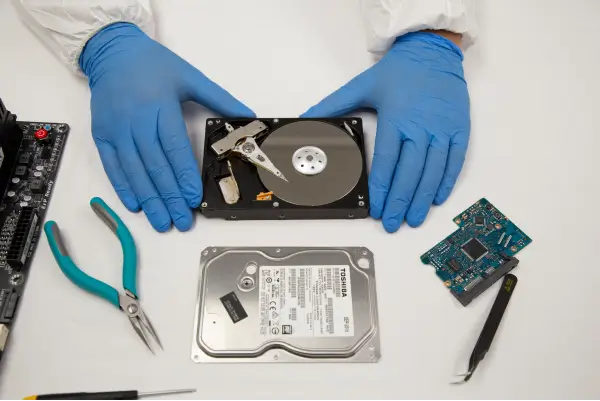The idea of encryption can be a difficult concept to understand because much of the inner workings happen behind the scenes. This computing method provides security by transforming plain text on a digital device into random characters that cannot be read. Basically, no outside party will be able to obtain your information, because to them it will appear to be meaningless.
Breaking Down the Encryption Process
Encryption is a form of cryptography, which is a way to solve codes. This primary form of data protection has evolved over centuries from letters on scrolls to modern computing. When a user sends normal data, known as plaintext, it travels as a group of random characters known as ciphertext. When the receiver gets this information, they use a key to decrypt it and can then view the plaintext.
There are several types of encryption methods that are used with the most popular being:
- AES (Advanced Encryption Standard)—this is a symmetric algorithm where data is encrypted by blocks of information at a time. Other methods usually work with data bit by bit. Symmetric means that the decryption key must be shared with anyone who intends to access the information.
- RSA—this is an asymmetric algorithm that is considered secure because of the size of the key and the mathematical process of using large integers with a product of prime numbers. This requires a public and private key.
- 3DES—This triple data encryption standard is an upgraded version of the original DES, but instead of the normal 56-bit key, it uses a 168-bit key, thus securing personal information three times over.
The Key to Your Data
As mentioned earlier, the process requires a key to decrypt what is being sent to you. There are two main types of keys that are used: public and private.
A public key (asymmetric encryption) is usually created by a trusted person or authority and is available to everyone involved in the algorithm through a public directory. This lets a user privately send a message to a receiver but allows outside parties to gain access to the key if it is in the public domain. This solution only allows users to encrypt messages, and a private key is still needed for decryption.
A private key (symmetric) is a secret way to encrypt and decrypt an algorithm, and unlike the public key cryptography, no one has access except the sender and receiver. This also means that if one of them were to lose this key, they could not access the sensitive information. It also allows for more control as anyone with this solution can send, receive, and add messages to the communication freely.
These algorithm solutions can be static, meaning they can be used for anywhere from several weeks to years. They could also be ephemeral, meaning designed for one-time use. There are a variety of other key types that have specific uses such as proper authentication, protecting sensitive data, creating a digital signature, and many more.
Who Is Using Encryption?
The financial and telecommunications industries are using encryption due to the amount of sensitive information that they transfer. Other businesses and individuals are slowly starting to realize the importance of encrypted data, but only after a variety of data breaches in which there was no layer of protection. Even applications like What’s App have been involved in the trend for encrypting messages between mobile apps.
Currently, there are no encryption laws in the United States. The only stipulation for telecommunication industries is that they cannot create a form of encryption so strong that they themselves could not intercept communications to share with the government if a legal situation arose.
How to Keep Your Own Data Encrypted
Everyone deserves complete protection for their information and sensitive files online and off. The SecureDrives are hardware-encrypted storage devices for individuals as well as all industries. These FIPS-validated devices keep data safe and require unique user-authentication methods. The KP model is unlocked using a unique PIN entered via the onboard keypad. The SecureDrive BT model can only be unlocked using an app on a mobile device, ensuring the user has complete control. F

















